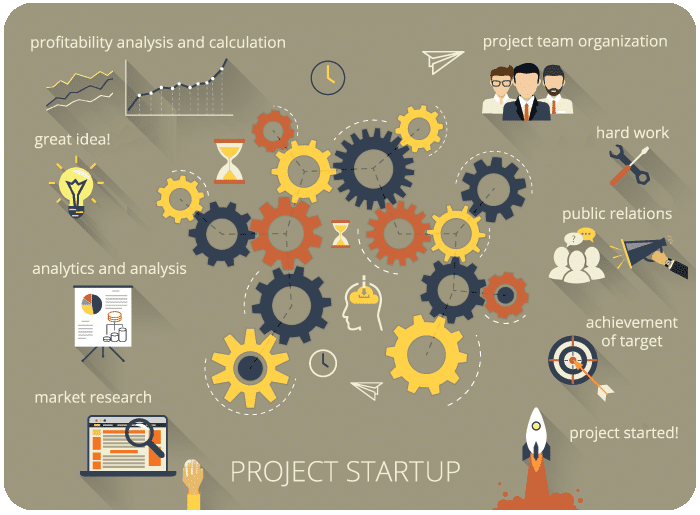Continual learning is a hot topic these days. The technologically driven 21st-century requires constant adaptation and adjustment simply to keep up with the status quo.
If you want to actually succeed in your business endeavors, though, that requires you to proactively encourage gaining knowledge and cutting-edge skills. This doesn’t just apply to yourself but to your entire team and even your company as a whole.
Here are some tips and suggestions for ways to go about fostering a business environment of continual learning. They address everything from policies and company structure right down to the nitty-gritty considerations of your day-to-day operations.
Set the Tone
If you want to create a learning-focused atmosphere, it’s important to make sure you set the tone right from the get-go. In other words, learning can’t just be a passing fancy or a trend for the next few months or years. It must be integrated right into the heart and soul of your company’s operations
Consider your business’s mission statement and vision. Are they structured to encourage a continually learning, growing, and developing mindset for everyone in your company? It’s wise to make an effort to weave this emphasis on learning throughout the very makeup of your enterprise. That way you can never wander too far from a learning focus before the very nature of your company’s existence will call you back to the straight and narrow.
Build a Learning Foundation
Along with the tone, it’s important to clearly communicate that learning isn’t just an option for your business — it’s a necessity. Everyone from the C-suite down to your newest employee should embrace an educational attitude as they contribute to your organization.
You can reinforce this foundational emphasis by hiring a chief learning officer (CLO). They can make it their exclusive business to identify skill gaps and any lack of knowledge within your operation. For instance, they could research, provide, and oversee the implementation of a curriculum to train employees with new software. The overall goal of a CLO is to move every member of your staff towards their greatest potential within the business.
Consider Company Culture
Once you’ve set the tone and created a learning foundation, it’s essential that you make an effort to maintain the educational emphasis that has been set in place. This can be done by continually cultivating a healthy company culture focused on learning and growing as a whole.
You can do this by considering the open-mindedness of new recruits. Are they willing to always be learning? Do they desire to thrive and grow in their work? You can also strive to imbue your management style with an educational fervor that is always trying to discover and learn new, cutting-edge leadership methods and techniques.
Bring In Outside Perspectives
Another way to keep that spark of learning alive is by tapping into third-party perspectives from time to time. While you can do this by hiring from outside the company for specific roles, you can also bring in quality consultants from time to time to interact with and educate your staff.
Look for candidates with experiences, skills, and knowledge that can be beneficial to your industry, business, goals, and overall operation.
For instance, if you’re struggling with your marketing, utilizing new technology, or even both items at the same time, you could look for a consultant who has a history as a chief marketing officer or a successful track record when it comes to adopting cutting-edge technology into an existing business. Having them “rub shoulders” with your staff can be an effective way to provide a new viewpoint to your employee’s existing thoughts and attitudes.
Develop Talent
Talent development is a bedrock of a continual learning environment. This often goes hand in hand with proper compensation as well. As you flesh out your compensation and talent development policy, it’s important to consider how it will impact your organization’s ability to always be learning.
For instance, are you genuinely compensating employees well? Proper pay frees up employees to focus on refining their skills and gaining new knowledge. It’s also important to consider on-the-job training and access to educational curriculum, software, and other opportunities as part of your company’s “learning-focused” compensation package. All of these encourage deep, long-term development in existing personnel.
Retain Talent
If you want to maintain a learning environment, it’s also essential that you retain the staff that you already have. Continual turnover means more time wasted training new employees on rudimentary company knowledge and procedures.
If you provide good compensation and quality perks — such as retirement options or the ability to work from home — it can help you retain existing talent. This allows them to incubate within your company as they commit to growing and contributing to the organization’s long-term success.
Maintain Forward Inertia
The modern business world is constantly in a state of flux. As technology evolves on a yearly and at times even a monthly basis, it’s important to maintain forward inertia at all times. Like a shark, you must never stop moving — and that includes your learning efforts.
If you feel content with where you are at any one given moment, that doesn’t mean you should shift your strategy or ease off on the “learning gas pedal.” Always be moving forward, looking for new information, methods, and technologies that can refine and improve your company.
Encourage Employee Engagement
If a company purely consists of managers and executives leading and employees following, it can be hard to maintain a continuous learning atmosphere. In order to thrive, leadership must encourage employees to boldly engage with themselves and each other.
This can take place through delegating tasks, encouraging two-way communication with management, and generally decentralizing authority whenever possible. For instance, including employees in company-wide cultural decisions is an excellent way to encourage their participation.
Interdepartmental communication and horizontal interactions with coworkers is also wise, as it provides a cross-pollination of information that can be essential to healthy, long-term growth.
Practice Active Listening
While encouraging employees to actively share ideas with others and even with management is important, it won’t go far if said management isn’t even listening in the first place. In order for a decentralized approach to be effective, leadership must also be willing to listen to subordinates.
This isn’t simply referring to giving employees a pedestal from which to make their thoughts and opinions known. It involves active listening that builds trust and connections and genuinely takes into account employee’s ideas before making a decision. When this can be done, it encourages employees to invest themselves in their work, their teams, and their company as a whole.
Provide Feedback and Praise
Along with actively listening, it’s important that managers and project leaders take the time to deliberately provide praise for employees who show initiative, along with feedback for staff members in general. This helps to continually hone and redirect efforts towards larger goals and objectives. It can also avoid time being wasted on fruitless activities.
As regards continual learning, it can specifically help to challenge an employee’s desire to learn and develop in ways that benefit their employer.
Communicate Clearly
While this has been mentioned in passing thus far, proper communication is so important that it absolutely warrants its own section. Clear two-way communication, both vertically and horizontally, is crucial to sustaining a learning environment. It allows for the dissemination of information and knowledge and can be a primary way to keep everyone up to date and on the same page.
Communication is especially important in a world that is consistently moving towards remote work. It’s wise for a company to establish modes of communication that should be adopted by all personnel and updated when necessary. Mind maps have also been shown to be effective both as communication and learning tools.
Try New Techniques
When it comes to sustaining a continual learning environment over time, it’s important to look for new techniques that can shake up the status quo and keep everyone challenged and alert. Mind maps are great tools for shaking up learning, especially in eLearning environments. Not only can they help traditional students with note-taking, but they can also aid business learners with brainstorming for learning modules and in the workplace — what better way to help create new marketing or product ideas than a mind map?
For instance, there are many different kinds of study techniques, such as teaching others, processing out loud, creating plans, and setting goals. Each of these can help to encourage staff and management alike to keep their learning “muscles” in good shape.
Facilitate Rest
Finally, management should never forget the utter importance of pacing your learning activities. In fact, it’s essential to pace your staff not just with learning but with all activities in order to avoid stress and burnout — both of which can have devastatingly negative side effects on both your employees and your business as a whole.
In response to this possibility, make an effort to ease the pressure that can naturally settle on your team members. Reduce workloads where possible and establish a policy that is pro-taking breaks. These rest-oriented changes can be an effective way to give your staff a chance to think, gather their thoughts, and reflect, all of which are essential to properly absorbing a learning experience.
Thriving Through Continual Learning
As a project manager, it’s easy to slip into a rut of focusing only on the bottom line. However, when everything from larger goals to routine operations focuses exclusively on productivity and profits — to the detriment of your staff — it can quickly lead to a state of atrophy.
If you want to survive and thrive in the future, it’s important that you pace yourself in the here and now and focus on cultivating what you have. This can be effectively done by intentionally fostering a business environment of continual learning. By encouraging, cultivating, and feeding into an educational mindset for everyone in your company, you set your organization up to operate as a healthy business not just today and tomorrow, but for years to come.
About the author
Luke Smith is a writer and researcher turned blogger. Since finishing college he is trying his hand at being a freelance writer. He enjoys writing on a variety of topics but business and leadership topics are his favorite. When he isn’t writing you can find him traveling, hiking, or gaming.



